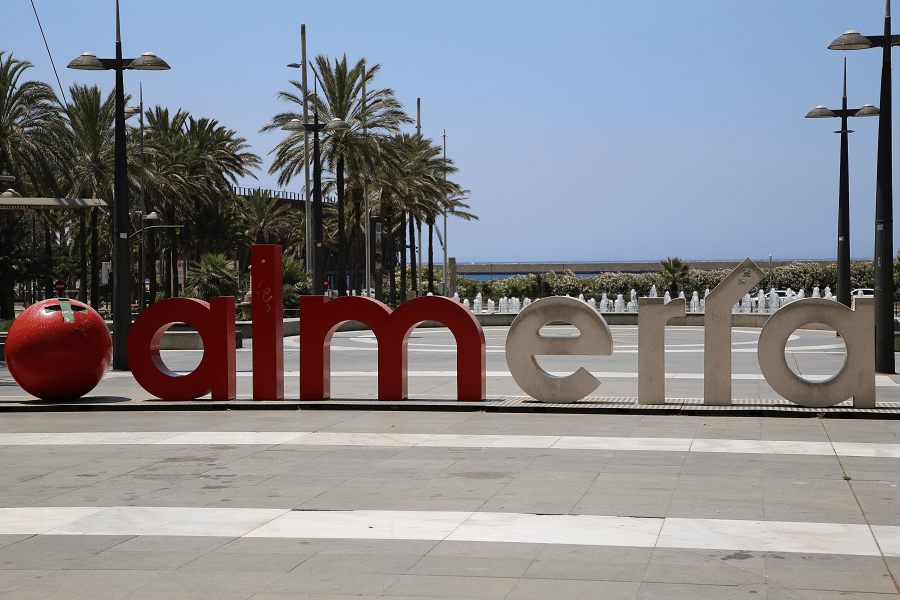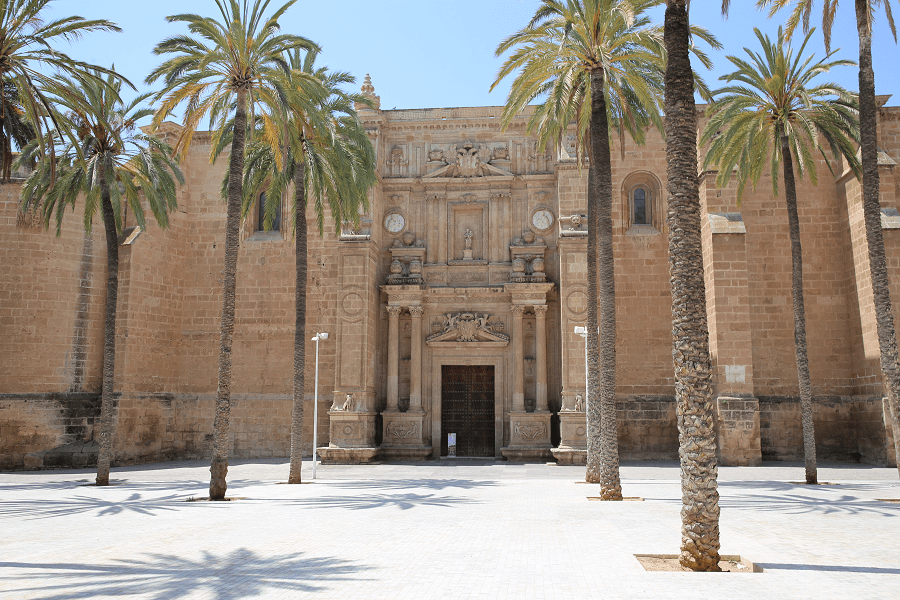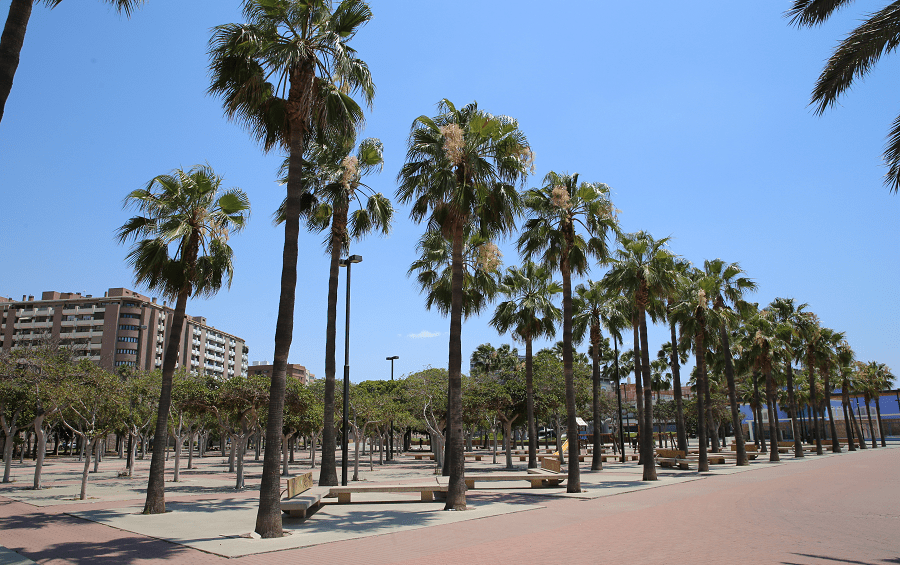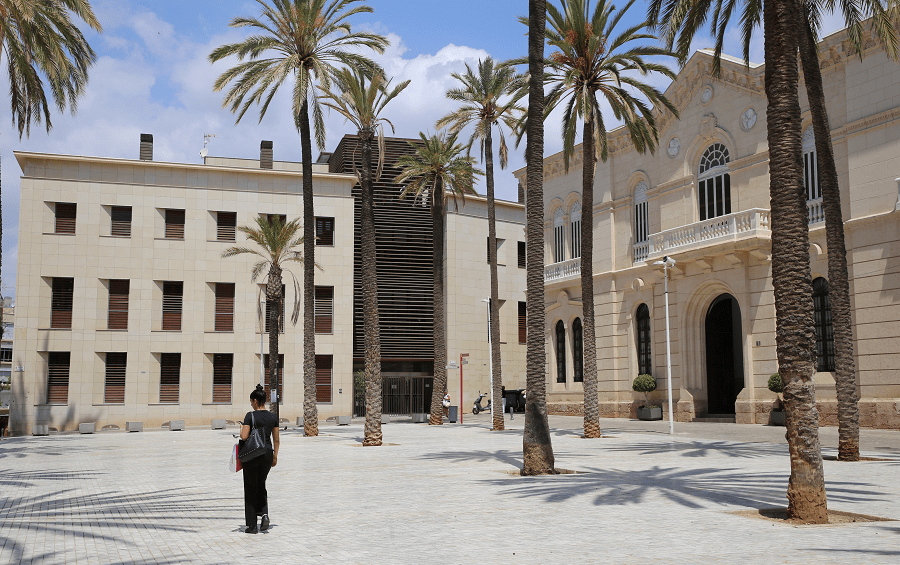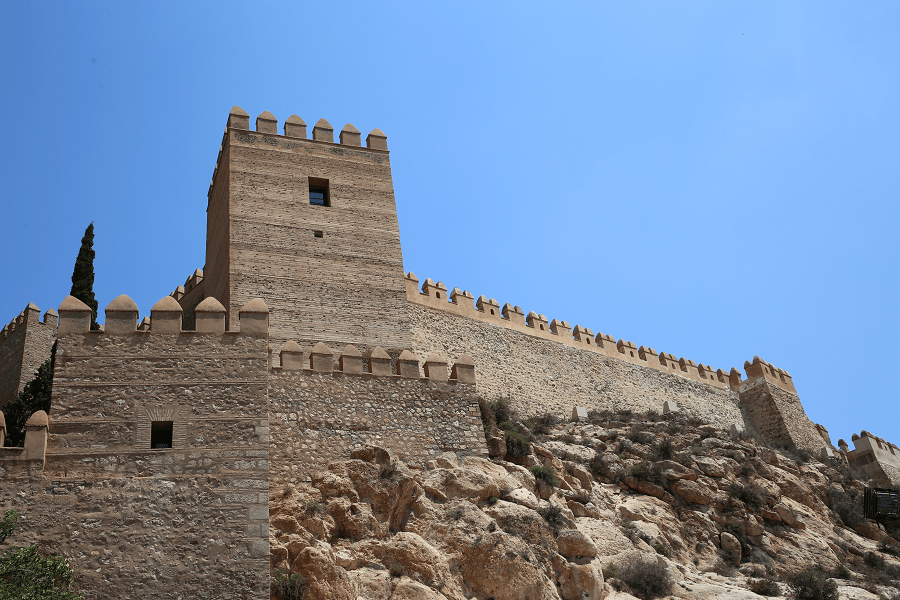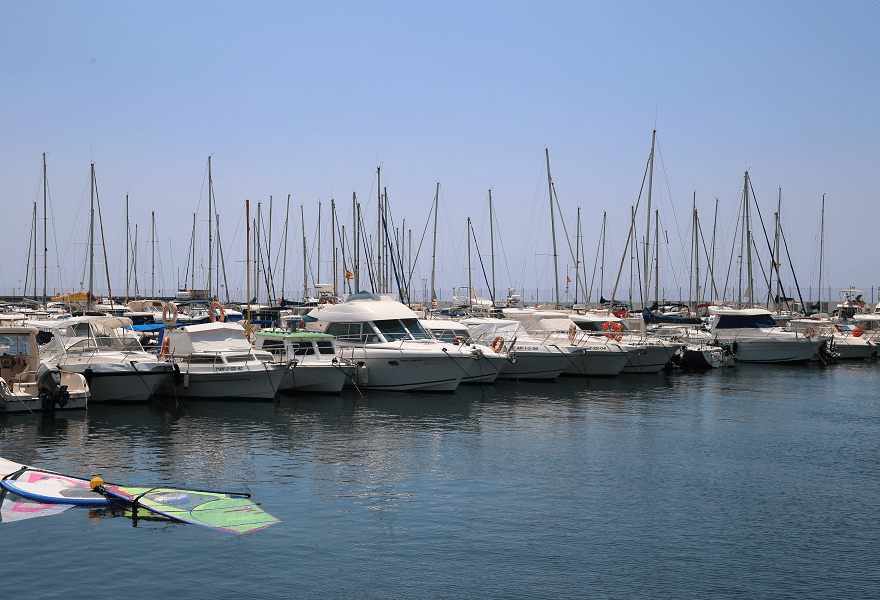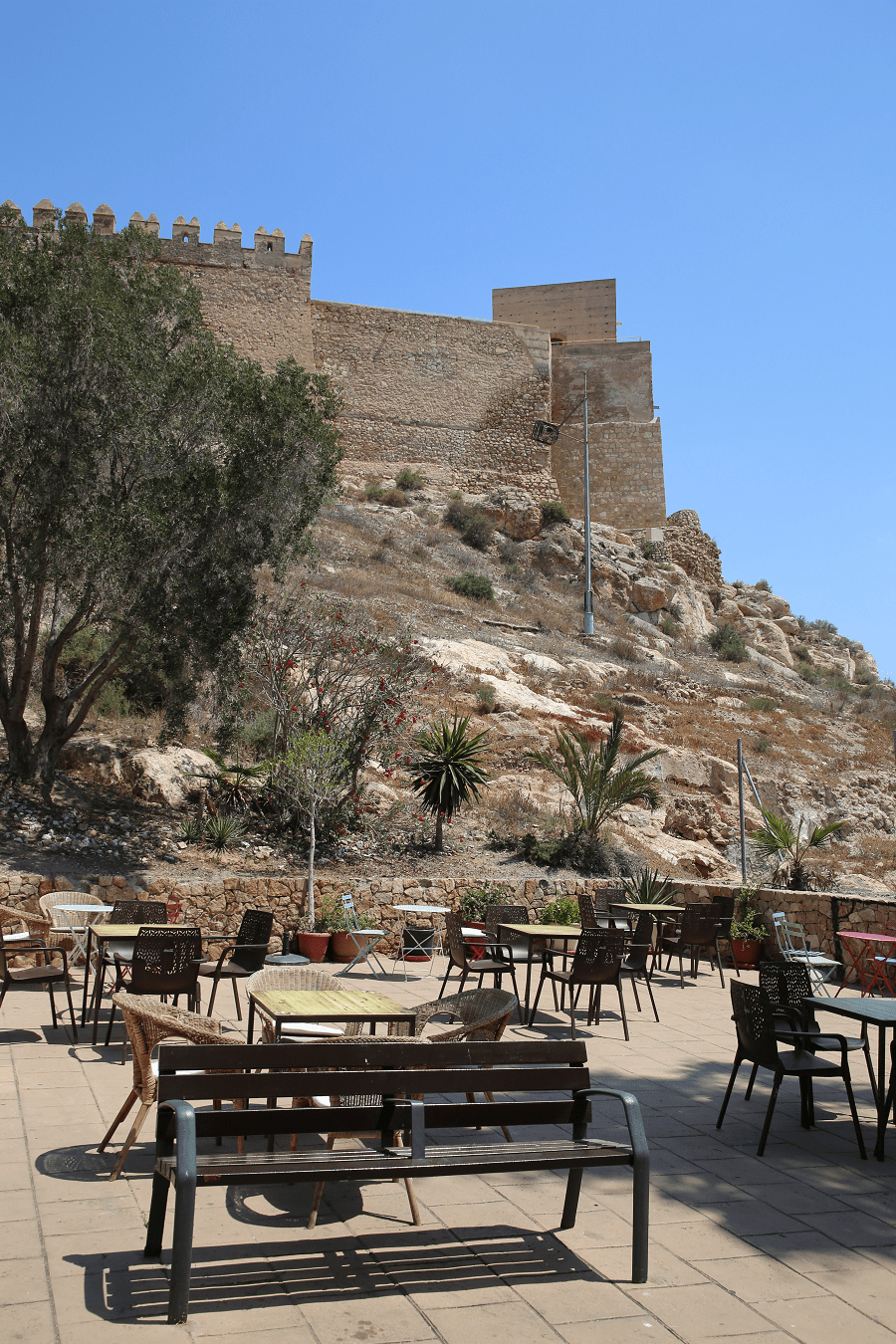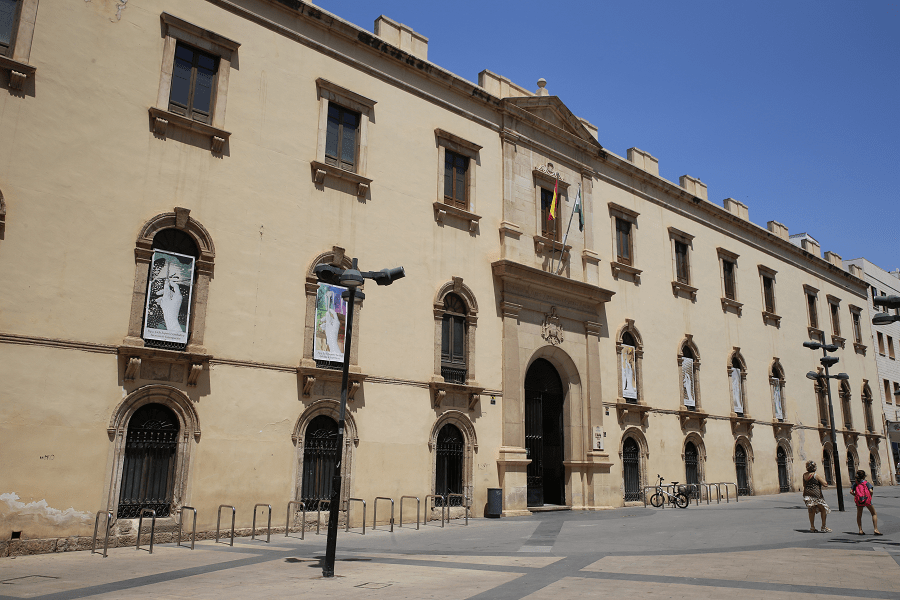Almería is a city and municipality in Spain, capital of the homonymous province, in the autonomous community of Andalusia. It is the nerve center of the Metropolitan Region of Almería, in the extreme southeast of the Iberian Peninsula and the tourist region of Almería-Cabo de Gata-Níjar.
It is surrounded by the Sierra de Gádor to the west, by Sierra Alhamilla in the north and to the east by the valley and delta of the Andarax river. Beyond, by a plain that culminates in the Cabo de Gata mountain range. To the south, its port and coastline open onto a wide bay on the Mediterranean Sea.
It is the seat of the judicial party No. 1 of the province and of the diocese that bears its name. In 2005 it also hosted the XV Mediterranean Games.
It was founded in 955 AD. C. by Abderramán III.
After its incorporation to the Crown of Castile in 1489, the population was decimated by earthquakes, plagues and incursions by pirates. The recovery was not evident until the end of the 19th century, with the resurgence of mining and the export of the Ohanes grape, and again from the 1960s, thanks to the explosion of intensive agriculture, tourism, construction and the marble industry.
Among its historical-artistic heritage, it is worth mentioning the Muslim Alcazaba (10th to 15th centuries), the cathedral-fortress of the Incarnation (16th century), the mineral loading bay or English Cable (late 19th century), and the Museum of Almería, reopened in 2006.
It is an important communication hub thanks to its remodeled port and international airport. At present it is one of the 30 most populated localities in Spain, also being the 19th provincial capital of Spain in terms of population.
Almería has a university center, the University of Almería (UAL). Founded in 1993, it has about 12,300 students.
It’s a popular part of the Costa de Almería of the Mediterranean resorts of Spain.
Tourism and main attractions
The Alcazaba of Almería is a fortified complex. The word alcazaba, from the Arabic word (القَصَبَة; al-qaṣabah), signifies a walled fortification in a city.
The first line of walls is a wide enclosure corresponding to the first Muslim military camp, used as shelter for the population in case of siege. For this task it was provided with large cisterns.
The first enclosure is separated by the second one by the so-called Muro de la Vela (“Wall of the Sail”), taking its name from a bell that warned the population in case of events such as the arrival of a ship in the port, danger, fires etc. This wall was built by King Charles III of Spain.
In the second enclosure was the residence for the governors, their soldiers and their servants. It included also the mosque, baths, tanks, tents etc.
The third enclosure, the most external, is also the most modern in the complex. After the Christian reconquest of Almería, the Catholic monarchs Isabella I of Castile and Ferdinand II of Aragon had a castle built in the most elevated sector of the town, more apt to resist the new gunpowder artillery.
The Alcazaba has been used to film Conan the Barbarian, Indiana Jones and the Last Crusade, Never Say Never Again, and most recently Wonder Woman 1984, as well as the syndicated TV series Queen of Swords used the inner courtyard and gardens.
Almería air raid shelters. The Spanish city of Almería suffered up to 52 bombings from air and sea, with a total of 754 bombs dropped during the Spanish Civil War. This led to the decision to create a system of underground shelters for the protection of approximately 40,000 civilians. These shelters measure more than 4.5 km long, and they are equipped with a surgery room and a food storage room. Now it’s open for tourists.
The Cathedral of Almería, in full the Cathedral of the Incarnation of Almería, is a Roman Catholic cathedral. It is the seat of the Diocese of Almería. The cathedral was built in Gothic and Renaissance architectural styles from 1524 to 1562. Its last bell was built in 1805.
It is considered Bien de Interés Cultural and was declared as a Monumento histórico-artístico perteneciente al Tesoro Artístico Nacional by the decree of the June 3, 1931.
On March 21, 1969 the cathedral was used as a scenery for the American film Patton.
The oldest civil building in Almería is the old Hospital de Santa María Magdalena, from the middle of the 16th century, which has an attractive courtyard, a chapel and a main portal of transition between the baroque and neoclassical styles of the 18th century. Another building from this period is the current School of Applied Arts, the former cloister of the Santo Domingo convent, built in the 16th century and greatly reformed during the 18th.
It is worth mentioning the sample of Christian military buildings erected between the 16th and 18th centuries, the main one being the Barracks of Mercy, from the 18th century. Located on the ablution courtyard of the primitive mosque, it has a courtyard dotted with arches, as well as orange trees and a baroque façade.
On the other hand, there are numerous watchtowers erected at this time to defend the coastline: the tower of La Mona, in La Garrofa, the castle of San Telmo, Torrecárdenas, the watchtower of El Perdigal, the Strong Houses of El Alquián, Torregarcía and the tower of San Miguel de Cabo de Gata, built in 1756 by order of Fernando VI and future museum fishing.
Finally, among the palatial buildings – the Casa de los Puche or the Palace of the Viscounts of the Almansa Castle, from the 18th century, are noteworthy.
Between the end of the 19th century and the beginning of the 20th, various infrastructures, public and private buildings of an eclectic and historicist nature were erected, coinciding with the urban expansion motivated by the demolition of the Arab walls in 1855 and the economic boom of mining and the export of the grape. Among them are the Plaza de Toros (1888), the Mercantile Circle (1898), the City Hall building or the Cervantes and Apolo theaters.
The iron architecture is represented in the railway station, in 1893, the Central Market, in 1893, or the English Cable, in 1904. El Cable Inglés, also known as El Alquife pier, is an old mineral loading dock, owned by The Alquife Mines and Railway Company Limited, an example of iron architecture. Its construction concluded in 1904, and linked the station with the port. With an eclectic style characterized by the use of new materials, it followed the guidelines of the Gustave Eiffel school. In 1998 it was declared an Asset of Cultural Interest of Andalusia.
Finally, noteworthy are the palaces built in the heat of the aforementioned nineteenth-century boom, such as the Palace of the Marquises of Cabra (1840), the Palace of the Marquis of Torrealta (1847), or that of the Provincial Council (1884). Later, bourgeois houses were built such as the Cultural Casino (1888), the Butterfly House (1907) or El Preventorio, a neo-Mudejar style chalet built in 1927.
Cuisine and restaurants
Being isolated from the rest of the peninsular territory, Almería was forced to self-supply for a long time, which made it possible to develop a simple but diverse cuisine, based on local products.
The sea is one of the main resources of the Almeria table. We can point out monkfish, mackerel, red mullet, octopus, squid, cuttlefish, red shrimp from Almería or the famous gallants. Unlike other parts of Andalusia, Almeria cuisine stands out for the preparation of grilled fish.
There are three Michelin list restaurants in the city:
- Valentín, Tenor Iribarne 19, 25 – 75 EUR • Traditional Cuisine
- Tony García Espacio Gastronómico, Avenida del Mediterráneo 201, 25 – 65 EUR • Contemporary cuisine
- Salmantice, Costa Balear 16, Almería, 25 – 80 EUR • Traditional Cuisine
Beaches
There are three main beaches in the city: Playa de San Miguel, Playa del Zapillo, Playa del Auditorio – PLAYA DE ALMERÍA.
Shopping
Most of the shops are located in the city centre. Head to Paseo de Almería to discover the city’s main shopping area. The main street and the surrounding streets host shops and boutiques – from big brand retailers to quaint boutiques.
Transport and how to get to?
By air, Almería is served by Almería Airport, the fourth largest in Andalusia. The winter timetable includes flights to Madrid, Barcelona, Melilla, London, and Seville, with international connections to Manchester, Birmingham, Brussels, Dublin and Swiss, German and other EU airports being added during the summer.
In the future, high-speed rail AVE services will link Almería to Madrid via Murcia.
Distances to main cities of Andalusia:
From Seville 3 hr 58 min (412 km) via A-92
From Granada 1 hr 46 min (167 km) via A-92
From Córdoba 3 hr 31 min (368 km) via A-45 and A-92
From Malaga 2 hr 7 min (200 km) via A-7
From Jaén 2 hr 16 min (225 km) via A-92
From Cadiz 4 hr 29 min (436 km) via A-7
From Huelva 5 hr 4 min (499 km) via A-7 and A-92
Main information
Area: 295 km² (municipality)
Coordinates: 36°50′25″N 2°28′05″W
Population: 201 322 (municipality)
Languages: Spanish
Currency: Euro
Visa: Schengen
Time: Central European UTC +1
See here best sea and ocean resorts of France and Spain (223 objects)




